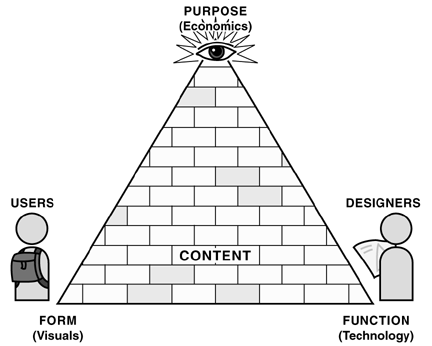The environment of a game is the base of the pyramid, which the assets and characters sit on top of. It’s the most important thing when it comes to producing a decent game, because the environment of the game has to make you believe you ARE that character and that you ARE in space (or anything other world/environment).

How does the environment influence the atmosphere of the game?
 The environment must be extremely relevant to the plot of
the game or character (if the game is about one person or event). You need, as
a level designer, to create a good atmosphere within the game, because you want
the player to go through all emotions and facial expressions when they play. For
example, I’m playing “Dead Space 3” I wouldn’t want the sun to be out and a
slight wind blowing flower petals across my face! I want a distressing
experience, with little natural light, caverns and tunnels with no exit, and
messages written in blood across the walls of the level, doesn’t that sound
better than the first option!? As a player you want to be in a new world where
nothing is impossible, making the environment as realistic as possible, but
keeping some stylisation throughout, this will create steadily flowing levels,
with a huge amounts of interest, that’s if the player actually stops and takes
a break from fighting “necromorphs” for example.
The environment must be extremely relevant to the plot of
the game or character (if the game is about one person or event). You need, as
a level designer, to create a good atmosphere within the game, because you want
the player to go through all emotions and facial expressions when they play. For
example, I’m playing “Dead Space 3” I wouldn’t want the sun to be out and a
slight wind blowing flower petals across my face! I want a distressing
experience, with little natural light, caverns and tunnels with no exit, and
messages written in blood across the walls of the level, doesn’t that sound
better than the first option!? As a player you want to be in a new world where
nothing is impossible, making the environment as realistic as possible, but
keeping some stylisation throughout, this will create steadily flowing levels,
with a huge amounts of interest, that’s if the player actually stops and takes
a break from fighting “necromorphs” for example.
Is
there a balance to be struck between realism and stylisation that supports or
hinders the player’s belief in the game world?
I think there is a very slim line
between realism and stylisation in the environments of games. Stylisation is a
key factor in a game, because you need parts of the level to be an assist to
the character such as having messages/symbols on the walls. If you apply those types
of assets to the majority of the levels, players will start to use their
surrounding world more often, there for bringing the environment into play,
making them notice the place they are walking though. On the other hand a good
level designer needs to know where to put the realistic factors into the game
and how realistic do they want to make it! I have played a wide selection of
games in my time, and as the years have gone by they have got more and more
realistic, which is great, but sometimes you want the weird and wacky to still exist.
For example “Modern Warfare 2” is based on real world events, WAR. And most of
the environments are real, a level on the game is called “Afghan”, where do you
think they got that from, Afghan……..istan. There was a lot of talk when Modern
Warfare was released that it was a mockery of real soldiers and how they
perform on the battle field. So I think when you have stylisation and realism
to pick from, have half and half, because otherwise the game will be too
truthful and real or so un-realistic it’s given a “U Certificate”.
Illustrate
an example of an Environment you particularly like – who designed it, what real
life equivalents does it pay homage to, does it reference existing film or
literature genres?
 If I had to verbally illustrate a
particular environment, it’d have to talk about the underwater horror-show,
which is Rapture from Bioshock and Bioshock 2. Steve Gaynor was the level
designer for Bioshock 2 (which is my favourite out of the bioshock trilogy), he
worked closely with a level artist who comes up with the sketches of the
stylisation of the levels. In terms of real life equivalents, there are lots of
people dedicated enough to make props and even short films from “Rapture”, but there
are no real environments like it! However there is a blog online, which
mentions that, the PayPal billionaire Peter Thiel, wants to build an underwater
or floating city. So Bioshock is not really based on existing places but it might
inspire something REAL to be made from it.
If I had to verbally illustrate a
particular environment, it’d have to talk about the underwater horror-show,
which is Rapture from Bioshock and Bioshock 2. Steve Gaynor was the level
designer for Bioshock 2 (which is my favourite out of the bioshock trilogy), he
worked closely with a level artist who comes up with the sketches of the
stylisation of the levels. In terms of real life equivalents, there are lots of
people dedicated enough to make props and even short films from “Rapture”, but there
are no real environments like it! However there is a blog online, which
mentions that, the PayPal billionaire Peter Thiel, wants to build an underwater
or floating city. So Bioshock is not really based on existing places but it might
inspire something REAL to be made from it.
No comments:
Post a Comment